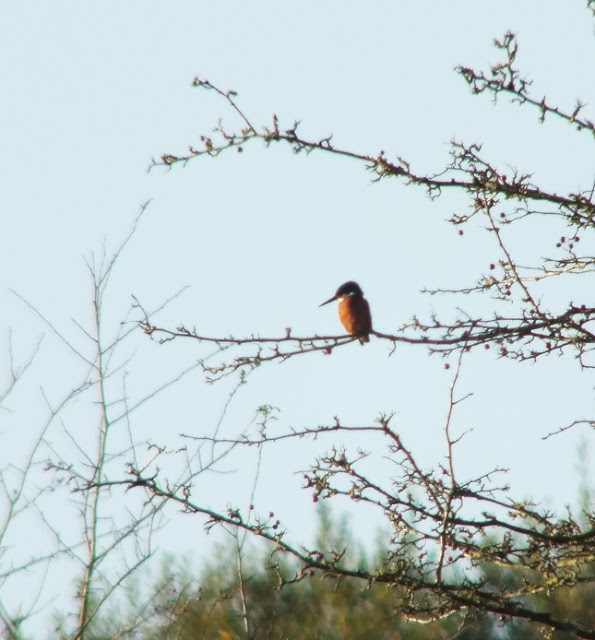The drive to work wasn't punctuated by any Starlings leaving the pier roost - are they there yet? And the sea was dire, not windy enough/or too windy and from the wrong direction so just a few Common Scoters were seen.
Then we learned that an old friend had died a very well respected naturalist who played a major part in the nature reserve actually becoming a nature reserve.
To cap a bad day we had the Young Uns in to help with the wildlife garden. AB turned up early and as we went to get the tools out for some reason we walked round the back of the shed and he said, quite casually "oh look there's a Blue Tit" to which we said WWWHHHERRREERRREE????? They are almost as rare here as on Shetland and Fair Isle We didn't see it and a quick scout round the places our generous spirited public put feeders up in the bushes at lunchtime proved fruitless too....will it be there in the morning? A check of our records back at Base Camp showed now records in 2010 or 2011 so it's the first for at least three years! Have to qualify that statement by saying we don't look that hard in the gardens too often though tending to prefer the over-excitement that is the seawall.
We will be buying some fatballs - just in case it wasn't a migrant and sticks around.
We'd finished our wildflower meadowing and were packing away the tools when the rain changing from just spitting to heavier than you like when a Mistle Thrush was seen on the lawn - didn't see it earlier when we were tit hunting so it probably dropped in with the onset of the heavy rain...another possible migrant for the day.
The only things of note we found whilst working were a huge Garden Cross Spider, which we put to one side for a pic later and promptly forgot about, and this large caterpillar - offers anyone?
 We had a brief look for the Bramblings on the North Blackpool Pond Trail with JS before dropping him home but again had no joy. Two Goldcrests and a fair few Blackbirds with three Grey Squirrels leathering in to the Hawthorn berries was good though despite the persistent heavy rain - needs a bag of seed scattering under the bushes and along the edge of the path to tempt them in to the photogtraphable open.
We had a brief look for the Bramblings on the North Blackpool Pond Trail with JS before dropping him home but again had no joy. Two Goldcrests and a fair few Blackbirds with three Grey Squirrels leathering in to the Hawthorn berries was good though despite the persistent heavy rain - needs a bag of seed scattering under the bushes and along the edge of the path to tempt them in to the photogtraphable open.In the meantime let us know who's curled up and trying to sleep before being rudely disturbed in your outback





















































